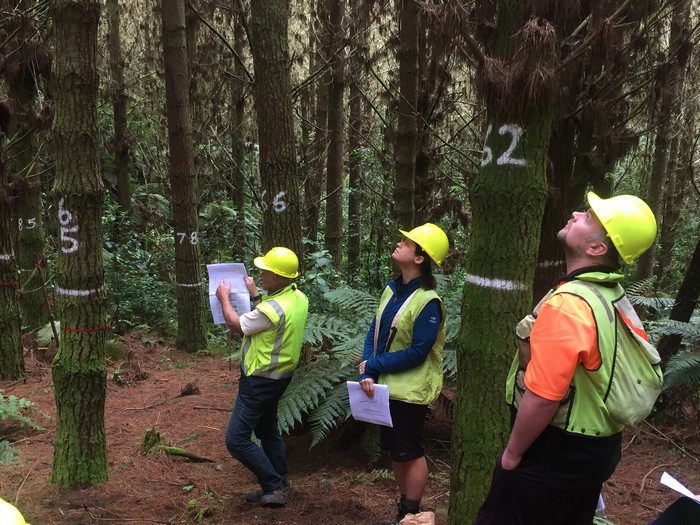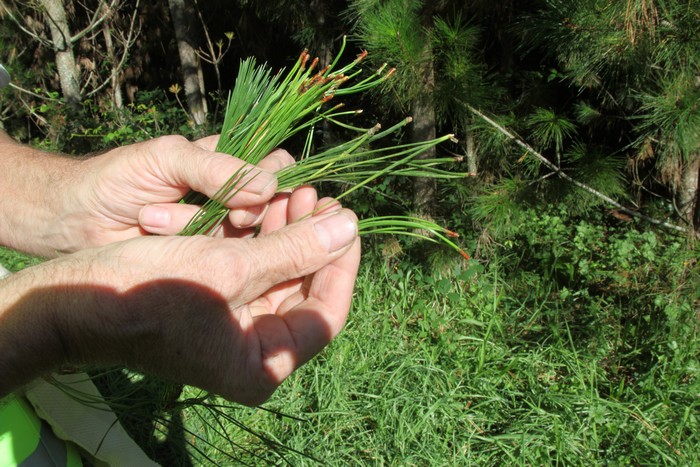Feeding our forests: Better planted forest nutrition

Soil nutrients play a critical part in healthy forest growth. Each nutrient has a role regulating the production and decomposition in all terrestrial ecosystems and in delivering the flow of ecosystem services from our planted forests.
Organisms living in the soil are responsible for maintaining and modulating forest productivity and health by contributing to soil development, cycling organic matter and nutrients from a plant and soil microbial perspective. In the future, forest nutrition science will be focused on understanding the importance of plant and soil microbiomes working together to ensure a sustainable supply of nutrients for trees.
Research is now focusing on forest nutrition at the ecosystem level and how the balance of energy and vital nutritional elements influence living systems. Nutrients range from elements like nitrogen, which are required in the greatest proportions (macronutrients) to those that are essential but in small quantities, such as boron (micronutrients).
We need to consider nutrient availability and balance at the ecosystem level and the site-specific requirements to optimise forest nutrition. Fertiliser addition is one tool for supporting increased forest growth. However, forest managers need more information to develop site-specific nutrient management plans that will enhance forest productivity and deliver multiple ecosystem benefits.
The potential of micronutrients
Micronutrients are essential nutrients used by plants and microbes in very small amounts. They are key components of complex compounds (e.g., cofactors of enzymes) that regulate metabolism and growth at a cellular level. An example is molybdenum, which is essential for biological nitrogen fixation.
Scion researchers are exploring the potential of specific micronutrients to boost forest productivity, sustainability and resilience. Research suggests that optimising the availability of specific micronutrients could improve plant water use efficiency, growth and development, and enhance tolerance to abiotic and biotic stresses. Micronutrients are also critically important for soil microorganisms in relation to microbial abundance, biodiversity and ecosystem multifunctionality.
Planning is underway to look at some effects of boron, molybdenum, manganese and zinc treatment options. The initial focus will be on how these micronutrients interact with the plant microbiome to regulate processes and ecosystem functions at a lab-scale. This will be followed by investigating how seedlings grown under stress benefit from selected micronutrients, before installing field trials in spring 2021.

Balanced nutritional approach
Site-specific nutrient treatments have been applied recently to nine mid-rotation radiata pine field trials from Northland to Otago and compared to a control and a conventional nitrogen-only treatment. After applying fertilisers tailored to a site for three years, an average volume gain of 2.2% per year has been seen, relative to controls. Over a full rotation, significant volume gains can be made, highlighting the importance of considering possible co-limiting nutrients, rather than focusing exclusively on nitrogen.
Predicting nutrient demand and growth response
Scion has developed a model called the Nutrient Balance Model (NuBalM), which predicts the demand for nitrogen and phosphorus from a site over a rotation of radiata pine forest. NuBalM models tree biomass and forest floor nitrogen and phosphorus stocks. It can be used to understand the nutrient gap required to meet a target productivity goal when the nutrient demand is highest. This information can then be used to help develop nutrient management plans and site-specific precise management interventions, such as the timing of applications of fertiliser.
The forest industry wants to know if and when a site will respond to fertiliser addition. Scion scientists have found that, with the addition of 200 kg/ha of nitrogen, there is a highly variable productivity response, both positive and negative. However, on average a forest is most likely to respond one to three years after fertiliser addition.
Researchers have also calculated a nitrogen enrichment factor by testing archived soil and foliage samples from past trials for levels of “light” nitrogen and “heavy” nitrogen, or natural isotopes. This information, along with site specific environmental data, tree age and measurements of tree growth, were analysed by machine learning software. Results showed the best growth response to nitrogen applications came from targeting young trees that have the freedom to grow (3 to 15 years old) and sites with more negative enrichment factors, where nitrogen is hard for plants to access.

Measuring nutrients more efficiently and in greater detail
Forest managers need information on their forest nutrition to optimise and support long-term sustainable productivity. Scion scientists are using two complementary approaches to develop quick, cheap and reliable analytical methods to supply this.
The first method is based on mid-infrared spectroscopy of soil and foliage samples. This lab-based method is a quick and cost-effective way to detect and quantify many different properties with one scan, including major minerals and soil pH.
The second method showing promise is remote collection of detailed hyperspectral data from trees. Strong relationships exist between spectral indices and photosynthesis, and photosynthesis is affected by nitrogen and phosphorus levels. Preliminary work using small radiata pine in pots has shown hyperspectral data can predict when nitrogen and phosphorus levels are growth limiting. This work is being scaled up to collect data from already established field trials.
Conclusion
Recent research into forest nutrition is producing results that have already led to new management recommendations for increasing forest productivity. Current and future research across the wide bounds of forest nutrition will maintain a productivity focus, plus improved understanding of nutritional ecology – the relationships between plant and soil microbiomes for productive healthy forest ecosystems. New research is underway in the Resilient Forests Programme, which aims to deliver the healthy, hardy and productive planted forests New Zealand needs. The New Zealand forest industry can look forward to strong and healthy, next generation planted forests that continue to bring “prosperity from trees”.
The Resilient Forests Programme runs from October 2019 to September 2021 and is supported by the Strategic Science Investment Fund and Forest Growers Levy Trust.
